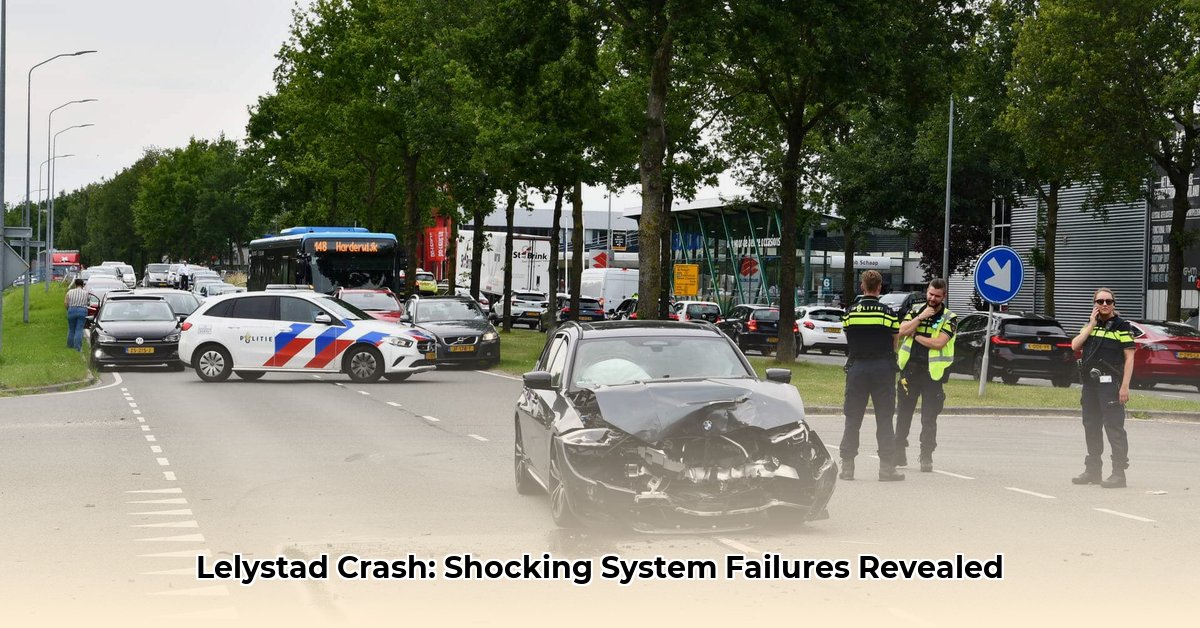
A Fragmented System Jeopardises Lives
Lelystad's emergency response system is facing a serious challenge: a fragmented reporting system that compromises public safety. An analysis of two Lelystad emergency reporting websites – 112-nu.nl and 112meldingenlelystad.nl – reveals significant inconsistencies and potential delays in reporting and handling emergencies. This report highlights these shortcomings and proposes solutions to urgently improve the system.
Inconsistent Reporting: A Patchwork of Information
The existence of two separate websites for reporting emergencies in Lelystad raises immediate concerns. These sites, while ostensibly covering similar ground (police incidents, fires, ambulance calls, and air ambulance missions), seem to operate independently. This lack of coordination is worrying: vital information isn't being shared effectively. Precious seconds could be lost delaying paramedics due to unavailable information, posing a direct threat to public safety. The current system is inadequate; a unified approach is crucial.
Discrepancies in Reporting: Where the Stories Differ
A comparison of data from 112-nu.nl and 112meldingenlelystad.nl reveals substantial discrepancies. The lack of clear communication between the sites leaves open the possibility of double-reporting or, worse, missed emergencies completely due to information being siloed. Inconsistencies in categorisation and recording of events also hamper response teams. One site might pinpoint an accident's location while the other only offers a general area. This lack of detail hinders effective response. The problem isn't just technical; it points to a more systemic failure in communication and standardisation.
Identifying Critical Gaps: Missing Pieces of the Puzzle
Lelystad's reliance on separate, uncoordinated websites creates a serious risk. The accuracy and reliability of the data are questionable. Are there delays? Are standard reporting procedures even in place? Crucially, there's a lack of contextual information. What preceded the emergency? What happened afterwards? This is vital for post-incident learning and improvement, and the fragmented system inhibits this. A more robust and organised system is urgently needed.
A Call to Action: Recommendations for Improvement
The issues uncovered demand immediate action. The following steps are crucial:
Short-Term Actions (Within One Year):
- Lelystad Municipality: Conduct a comprehensive review of existing emergency reporting systems. The priority is consolidating and standardising data – centralising all information into a unified system.
- Emergency Services: Improve communication and information-sharing between teams. Agree on standard reporting practices to ensure consistency and accuracy.
Long-Term Actions (3-5 Years):
- Lelystad Municipality: Establish a single, publicly accessible emergency database. This should integrate data from all current sources and ideally connect with national systems. It should also support post-incident analysis.
- Emergency Services: Use this new data to optimise resource allocation, exploring technologies such as predictive modelling for faster and more efficient responses.
- Lelystad Residents: Learn to use the new reporting system correctly. Provide feedback to improve the system. Engage in community safety initiatives.
- Data Analysts: Develop methods to integrate data from multiple sources, address data biases, and optimise response times.
Risk Assessment: The Potential for Catastrophe
Isn't it concerning that a fragmented reporting system could lead to major incidents being delayed or even missed entirely? This is why a unified system is vital.
| Risk Factor | Likelihood | Impact | Mitigation |
|---|---|---|---|
| Inconsistent Data | High | Very High | Centralized reporting, standardized procedures, regular data quality checks |
| Reporting Delays | Medium | High | Faster data capture, real-time updates, improved infrastructure |
| Data Accuracy Problems | Medium | High | Data validation, feedback loops, regular audits |
| Lack of Contextual Information | High | Medium | Enhanced data collection, integrating data from related sources |
Regulatory Implications: Meeting Legal Obligations
The current fragmented system raises legal concerns regarding data privacy, transparency, and potential misuse. Clear data handling guidelines are essential, ensuring compliance with all relevant data protection regulations.
Conclusion: Building a Safer Lelystad
The analysis reveals significant flaws in Lelystad's emergency reporting. A unified, comprehensive system is crucial for efficient emergency responses and community safety. This is not merely about efficiency; it is about saving lives. Decisive action is required.